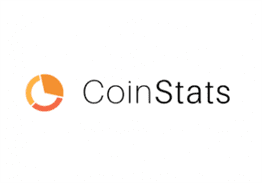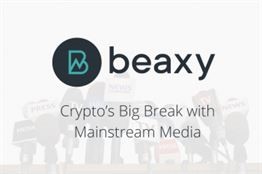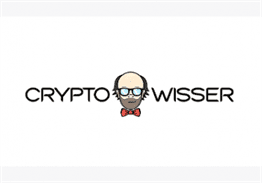It can be converted to money only by selling it, a time-consuming and costly process. Consider a $20 bill that you accidentally left in a coat pocket a year ago. Value has, in effect, been “stored” in that little piece of paper. We can understand the significance of a medium of exchange by https://www.beaxy.com/exchange/eth-usd/ considering its absence. She teaches economics at Harvard and serves as a subject-matter expert for media outlets including Reuters, BBC, and Slate. The National Commodity and Derivatives Exchange is one of the top commodity exchanges in India based on value and the number of contracts.

As mentioned earlier, the rise of fiat currencies came about as countries attempted to smooth out the business cycles and avoid the busts of credit cycles. Fiat currencies rose to prominence in the early 20th century as governments sought to insulate our economies from the booms and busts of the economic cycles. Allowing the central banks to control the printing of money allowed countries to avoid society crushing depressions like those experienced in the early 1920s, or so the theory believes. Due to the inherently risky nature of fractional reserve banking, an issuer of credit money is much more likely to default than the issuer of representative money. Like representative and fiat monies, credit money is relatively easy to counterfeit . The biggest problem with cryptocurrencies is that they do not solve an exigent problem. Most people are satisfied with fiat currencies and while financial transactions can be tracked, most people who are not criminals will not worry so much about that. This is one reason why organizations are required to report any cash transactions in excess of $10,000 in the United States to the IRS.
What Is Money?
While anarchists may laud that, modern civilization cannot exist without government. Cigarettes may be used as a form of commodity money in some circumstances. Something that serves as commodity money only has to have value in itself, rather than being of use to the bearer. For example, there is little most people can actually do with a gold coin and, if someone is a smoker, a cigarette is of more practical use. The gold coin has a much higher value, though, as a jeweler or goldsmith would be able to make use of it to produce an expensive object. Most early money systems were based upon a commodity, or valuable good. A commodity money system is based upon goods that would have value even if they were not being used as money.
The currency itself must also be durable; otherwise it would eventually lose its value as money as it decays or disintegrates, and, thus, people would not keep it. Easy access to large, almost unlimited, numbers of people has turned us into commodities. For all but the superstars among us, it has, per the definition, rendered humans widely available and interchangeable. Which of the following are money in the United States today and which are not? Currency itself is perfectly liquid; you can always change two $5 bills for a $10 bill. Checkable deposits are almost perfectly liquid; you can easily cash a check or visit an ATM.
Definition of Commodity Money:
In the past, any commodity that did not comply with these standards was not accepted as commodity money. Therefore, commodity money is money that has its worth or intrinsic value. Unlike fiat money, the value of commodity money is not determined by a government decree. It is not like bitcoin and other cryptocurrencies, the values of which are influenced by the transactions in a ledger. Major examples of fiat money are currencies and they are Indian rupees, US dollar, British pound, etc. On the other hand, major examples of commodity money are things like gold, silver, copper, tea, etc. And we know that things like gold, silver, copper, etc are extracted from the earth, and after polishing it to a finished product it is sold in the market. But, here comes the major limitation of commodity money and that is they are not easily accepted or accessible everywhere. There are some specific places where we can find commodity money for selling and purchasing. The government does not issue the commodity money, but it is one of the wealth of the country’s economy.

These traders make or take delivery of the actual commodity when the futures contract expires. The quality of a given commodity may differ slightly, but it is essentially uniform across producers. When they are traded on an exchange, commodities must also meet specified minimum standards, also known as a basis grade. Hyperinflation describes rapid and out-of-control price increases in an economy. In this article, we explore the causes and impact of hyperinflation. Money is a medium of exchange that can be used to facilitate transactions for goods and services. Investopedia requires writers to use primary sources to support their work.
Gold coins were valuable because they could be used in exchange for other goods or services, but also because the gold itself was valued and had other uses. It was found inconvenient as well as dangerous to carry gold and silver coins from place to place. So, invention of paper money marked a very important stage in the development of money. Paper money is regulated and controlled by Central bank of the country . At present, a very large part of money consists mainly of currency notes or paper money issued by the central bank. A fiat currency is a national currency that is not pegged to the price of a commodity such as gold or silver. The value of fiat money is largely based on the public’s faith in the currency’s issuer, which is normally that country’s government or central bank. Inflation results when the supply of money increases faster than the economy expands, which results in higher prices. Sometimes, governments increase the money supply as an easy way to solve fiscal problems, but too much inflation can destroy the value of money.
Read more about eth price calc here. With progress of human civilization, commodity money changed into metallic money. Metals like gold, silver, copper, etc. were used as they could be easily handled and their quantity can be easily ascertained. It was the main form of money throughout the major portion of recorded history. Some advantages of fiat money are like it only uses the paper as the only natural resource for manufacturing the notes, it is stable, its supply is unlimited by the government, etc. On the other hand, some advantages of commodity money are like the raw form of the commodity can be redesigned into commodity money, the government never controls the commodity money, etc. The United States Dollar , the Euro and most other major currencies are fiat monies. The main alternative to fiat currencies is commodity money, which is backed by a tangible asset. The USD, for example, was previously backed by a specific amount of gold, and people could convert one into the other.
What is fiat money? Definition and examples
The process is cumulative, with the most marketable commodities becoming enormously more marketable and with this increase spurring their use as media of exchange. Adding to this, there is greater opportunity for bubbles with fiat currency – an economic cycle in which there is a rapid increase in price before an equally rapid decline in price. On the other hand, the government does not issue the commodity money and the value of the money. The U.S. dollar is the most widely used currency in international trade, even in trade between countries other than the United States. It is the unit in which countries often express their exchange rate. Countries maintain their “official” exchange rates by buying and selling U.S. dollars and hold dollars as their primary reserve currency. American colonies, France, and the Continental Congress started issuing bills of credit that were used to make payments. The provincial governments issued notes that the holders would use to pay taxes to the authorities. The issuing of too many bills of credit generated some controversy due to the dangers of inflation.
- This kind of money was first used during ancient days when trade, exchange, and economic activity, in general, were not very advanced compared to today.
- Slower Growth – fiat monies promote faster economic growth, and because of the nature of the ability to manipulate quicker, they can provide liquidity to stimulate faster economic growth.
- Money is a commodity accepted by general consent as a medium of economic exchange.
However, we will discuss these modern alternatives and the technologies that underpin them in future articles of this series. For now, stay tuned and check our newsletter for any and all content updates. As societies grew, trading increased, and the number of goods rose, the supply of any given type of commodity money could not keep up with the demand. Consider for example a society that accepts tea leaves as its most common form of money. For people to trade efficiently, they would all need to have a certain amount of tea leaves, and the more trade increases, the more tea leaves they would need. Unfortunately, the supply of tea leaves is limited by many factors such as seasons, the number of plantations, and the consumption of tea itself. The increased prevalence of bubbles is because fiat currencies have a virtually unlimited supply, which means that quantitative easing is an option for governments. While possibly providing stimulus to an economy, quantitative easing can also cause greater inflation rates.
Module 12: Money and Banking
Eventually, Europeans began traveling and accessing west Africa more frequently, noticed this usage of trade beads, and exploited them. Europeans had glass-making technology, and could produce beautiful beads with modest effort. So, they could trade tons of these beads for commodities and other goods . These were pastoral societies, often on the move, and the ability to wear your money in the form of strands of beautiful beads was useful. These beads maintained a high stock-to-flow ratio because they were kept and traded as money, while being hard to produce with their level of technology. Rai stones were a notable form of money while they lasted because they had no utility. In essence, it was one of the earliest versions of a public ledger, since the stones didn’t move and only oral records dictated who owned them. In that sense, rai stones were a ledger system, not that different than our current monetary system. The ledger keeps track of who owns what, and this particular ledger happened to be orally distributed, which of course can only work in a small geography.
Want to Boost the Value of Your Home? Plant a Tree — Right Now – Money Talks News
Want to Boost the Value of Your Home? Plant a Tree — Right Now.
Posted: Mon, 25 Jul 2022 13:20:52 GMT [source]
The stronger the economy, the stronger its money will be perceived and vice versa. However, people’s perceptions must be supported by an economy that can produce the products and services that people want. Under a fiat monetary system, the governments are in a position to attain monopoly over money and by using their monopolistic control over money; they can inflate until the money is completely worthless. With commodity money, the value of commodity money is determined by the production of commodities. The monetary system has always been central to the economy of any country. It consists of a set of mechanisms used by governments to provide money to the consumers and to control the exchange of money and its supply, especially by adjusting the rates of interest in the market. Generally, the value of commodities is less volatile, but there is always the risk that they may lose value. For example, gold is a valuable commodity, but the price of gold can decrease or increase with time. If our current fiat system fails, what replaces it will more likely be a new representative money rather than a strict commodity money. Any CBDC will likely fail with the failure of fiat money, unless it is backed by a valuable commodity.

